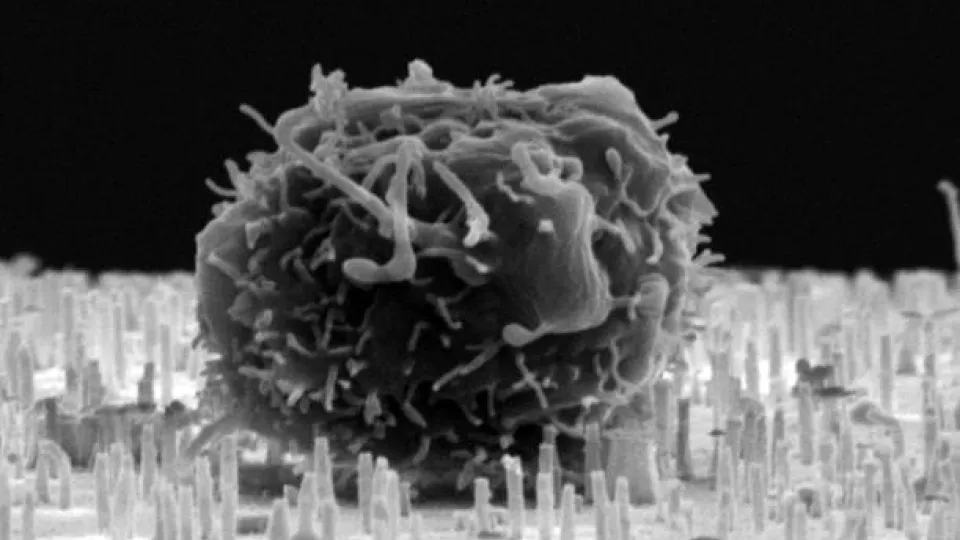The discovery and development of therapeutic biomolecules – such as the gene editing technology CRISPR – has rapidly evolved in recent years, however the delivery methods to target cells remain less than ideal.
Current approaches include electroporation, using an electric field to increase cell permeability, or the use of genetically modified viruses. Although regularly used in the research setting, these methods come with the undesired side effects of high levels of cell death (in the case of electroporation) and safety issues (in the case of viruses).
A collaborative study between research groups from StemTherapy and NanoLund, strategic research areas funded by the Swedish Government, has aimed to tackle this problem.
“We wanted to develop an alternative, more gentle method for the delivery of biomolecules into human hematopoietic stem cells.” explains Ludwig Schmiderer, PhD student within the Stem Cell Regulators group led by Prof. Jonas Larsson and first author of the study.
“Together with Martin Hjort, a researcher at NanoLund and CTO at NAVAN Technologies, we investigated the potential of nanostraws for this purpose.”
Nanostraws are aluminium oxide tubes 100–200nm in diameter and 1–3 µm in length and produced locally in the Lund Nano lab, enabling fast feedback between biological experiments and material science optimization.
“In previous studies we have used these structures to repeatedly extract molecules from cells, with little effect on cell viability.” explains Martin Hjort.
“In this study, we were curious if we could do the opposite and use nanostraws as a direct fluid pathway for biomolecules into human hematopoietic stem cells.”
In the study published in the journal PNAS, the research groups describe how they have developed a method termed Centrifugation enhanced Nanostraw Transfection (or CeNT for short).
“The surprisingly gentle nature of this method encourages us to explore practical applications of nanostraws.” concludes Martin Hjort.
“Moving forward, we are now using this technology to deliver gene editing agents, such as CRISPR-Cas9, which can potentially be used to correct disease causing genetic mutations.”
Read more:
https://www.stemcellcenter.lu.se/article/nanostraws-used-to-deliver-biomolecules-to-stem-cells


